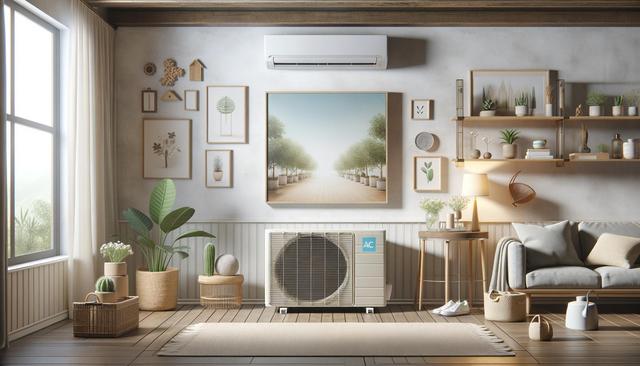Understanding Ductless Air Conditioning
Ductless air conditioning, also known as a mini-split system, is an increasingly popular option for homes without existing ductwork. Unlike traditional central air systems that rely on a network of ducts to distribute air, ductless systems operate through individual units installed in each room or zone. These units are connected to an outdoor compressor via a small conduit, making installation far less invasive and more adaptable to different building types.
One of the main reasons homeowners consider ductless systems is the convenience they offer. Whether you’re upgrading an older home, renovating a basement, or adding a new room, ductless AC can be a practical choice. Since the system doesn’t require ducts, it eliminates the energy loss commonly associated with ducted systems—sometimes as much as 30% of total energy consumption.
In addition to being energy-efficient, ductless systems also provide an opportunity for precise climate control. Each indoor unit can be operated independently, allowing you to tailor the temperature in individual rooms according to personal preference.
Energy Efficiency and Cost Savings
One of the standout features of ductless air conditioning is its energy efficiency. Because these systems avoid the energy losses of ductwork, they often consume less electricity than traditional systems. Many ductless units are also equipped with inverter technology, which adjusts the compressor speed based on the cooling demand, further minimizing energy use.
Over time, the improved efficiency of ductless systems can translate into noticeable savings on energy bills. Homeowners may find that their initial investment begins to pay off relatively quickly when compared to conventional HVAC systems. Additional advantages include:
- No need for duct cleaning or maintenance
For environmentally conscious homeowners, ductless AC systems can also reduce your carbon footprint. Many models use low-impact refrigerants and are designed to meet or exceed energy efficiency standards.
Flexible Installation Options
Perhaps one of the most appealing aspects of ductless air conditioning is its flexibility in installation. Whether your home is older and not designed to accommodate ductwork, or you’re simply looking to avoid the disruption of major renovations, ductless units offer a streamlined installation process. The components require only a small hole for the conduit, making them suitable for a wide range of architectural styles and layouts.
This flexibility also makes ductless systems ideal for:
- Home additions like sunrooms or garages
Because each indoor unit operates independently, homeowners can add more units over time if additional cooling zones are needed. This scalability makes ductless systems a smart long-term investment for growing families or evolving household needs.
Improved Indoor Air Quality
Indoor air quality is a growing concern for many households, and ductless systems offer several advantages in this area. Traditional ducted systems can accumulate dust, allergens, and mold over time, which are then circulated throughout the home. Ductless systems, by contrast, feature multi-stage filtration that helps reduce airborne particles and improve overall air quality.
Routine maintenance is also more straightforward. Filters in ductless units are typically easy to access and clean, allowing homeowners to maintain a healthier indoor environment without relying on specialized technicians. Benefits for air quality include:
- Reduction in dust and allergens
- Decreased risk of mold growth in ducts
- Customizable filtration options in some models
For those with allergies or respiratory conditions, the cleaner operation of ductless systems can make a noticeable difference in comfort and well-being.
Quiet Operation and Modern Appeal
Ductless air conditioners are known for their quiet operation, making them ideal for bedrooms, home offices, and living spaces where noise can be a distraction. The indoor units are designed to run at lower decibel levels than traditional systems, and the noisy compressor stays outside the home. This makes for a more peaceful indoor environment without sacrificing performance.
In terms of aesthetics, ductless systems offer a modern and minimalist design. The indoor units can be mounted high on a wall, suspended from a ceiling, or even recessed, depending on the model. Their sleek appearance often blends well with contemporary interiors, and the absence of bulky ductwork allows for cleaner architectural lines throughout the home.
Overall, ductless systems combine form and function, offering a cooling solution that meets both practical and stylistic needs. Their quiet performance and subtle design make them a strong choice for homeowners looking for both comfort and visual appeal.
Conclusion: A Smart Solution for Ductless Homes
For those living in homes without ducts or considering an alternative to conventional air conditioning, ductless AC provides a flexible, efficient, and aesthetically pleasing option. It reduces energy waste, enhances indoor air quality, and adapts to various home layouts without invasive installation. Whether you’re renovating, expanding, or simply upgrading your cooling system, a ductless air conditioner can offer a tailored solution that aligns with modern living preferences. With multiple benefits and growing popularity, it’s a solution worth exploring for long-term comfort and efficiency.




Leave a Reply